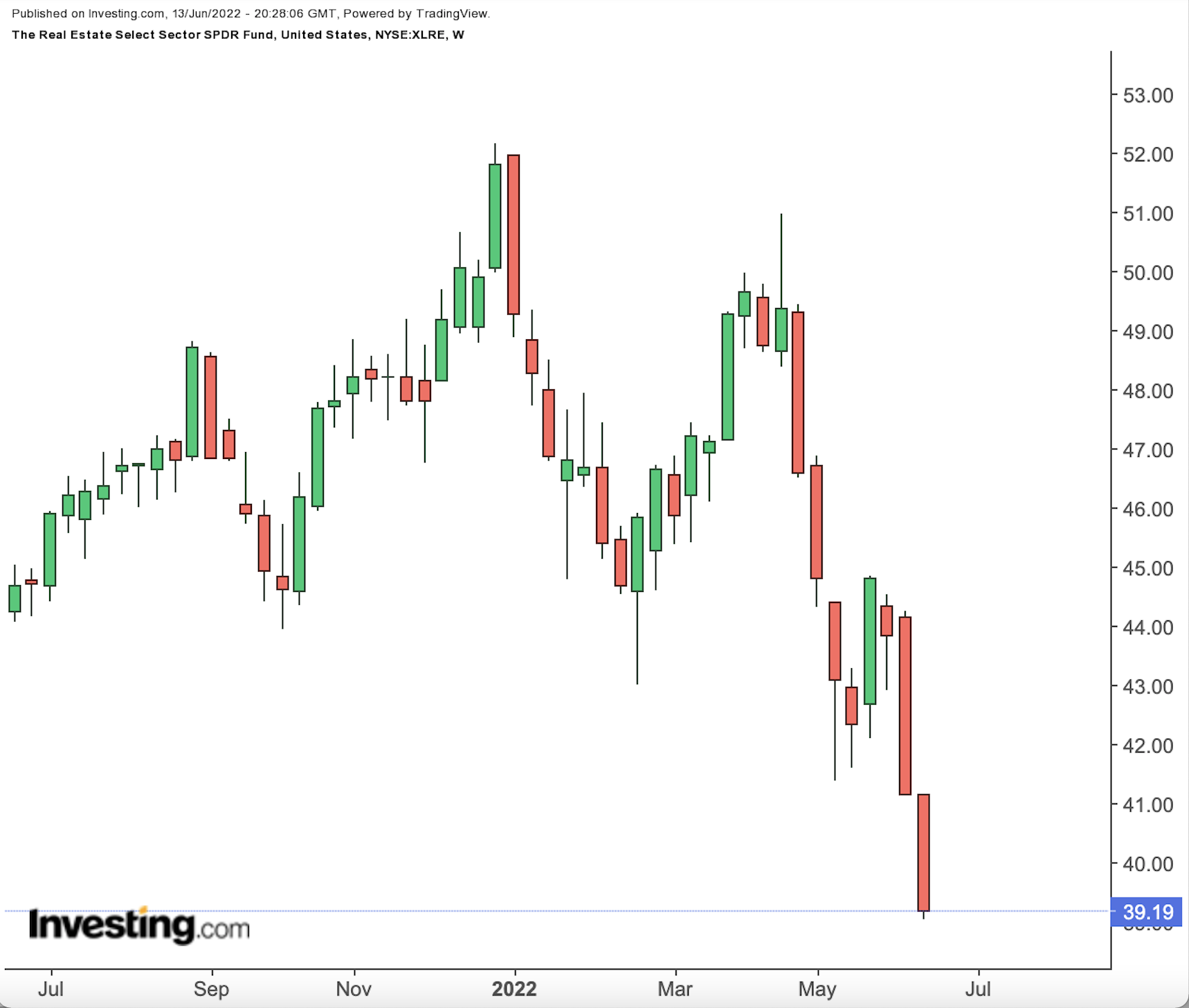After the hot Consumer Price Index release on June 10, analysts are expecting the Federal Reserve to keep raising rates. For consumers and businesses, the huge jump in food and energy prices is concerning.
Meanwhile, long-term equity portfolios have been suffering as investors are reconsidering allocation strategies to safeguard their capital. One asset class that receives increased attention in inflationary times is real estate.
Wall Street offers a relatively convenient way to invest in real estate via publicly traded real estate investment trusts (REITs). They provide exposure to different types of physical property both in the U.S. and globally.
REITs usually offer shelter against inflation as long-term leases typically have inflation-protection built in. In addition, shorter-term leases usually reflect current price levels.
For instance, the FTSE NAREIT All Equity REITs Index has outperformed the S&P 500 in 15 of the last 25 years. Meanwhile, its dividend yield of more than 3.4% appeals to passive income seekers. By comparison, the dividend yield for S&P 500 is now hovering around 1.6%.
However, on the other side of the equation is the negative effect of rising interest rates on REITs. As a result, the prospect of increased cost of debt financing has put pressure on the sector.
So far in the year, the Dow Jones US Real Estate Investment & Services Index has lost more than 40% of its value. Although the drop is unnerving for current shareholders in REITs, it also provides a good entry point into stocks in the industry.
With that information, here are two REIT exchange-traded funds (ETFs) that may appeal to readers seeking alternative investment options in the rest of the year.
1. The Real Estate Select Sector SPDR Fund
Current Price: $39.19
52-Week Range: $39.02 - $52.17
Dividend Yield: 3.01%
Expense Ratio: 0.13% per year
Revenues in the REIT sector stateside have gone over $225 billion, and the sector is expected to grow close to 6% in 2022. The Real Estate Select Sector SPDR Fund (NYSE:XLRE) provides access to a range of U.S. companies in the real estate sector. These REITs may include residential, commercial, as well as mixed-use real estate. However, the fund does not invest in mortgage REITs.

XLRE tracks the Real Estate Select Sector Index and currently has 31 holdings. It was first listed in October 2015.
Close to 60% of the fund is in the leading 10 stocks, making the fund a concentrated one. Among those top names are American Tower (NYSE:AMT), Prologis (NYSE:PLD),Crown Castle International (NYSE:CCI), Equinix (NASDAQ:EQIX), Public Storage (NYSE:PSA) and Digital Realty Trust (NYSE:DLR).
In late January, XLRE saw a record-high. However, 2022 has been for the REITs in the fund. Thus, so far in the year, the ETF has lost more than 23% and is now in bear market territory. As we write, XLRE is also hovering at multi-year lows.
Trailing price-to-earnings (P/E) and price-to-book (P/B) ratios stand at 37.25x and 3.32x. Buy-and-hold REIT investors could consider investing in a low-cost fund like XLRE around these levels.
2. Vanguard Global ex-U.S. Real Estate Index Fund ETF Shares
Current Price: $43.77
52-Week Range: $43.77 - $60.50
Dividend Yield: 7.94%
Expense Ratio: 0.12% per year
In 2021, the size of the global real estate market reached almost $3.7 trillion. Furthermore, between 2022 and 2023, it is forecast to grow at a compound annual growth rate (CAGR) of well over 5%.
The Vanguard Global ex-U.S. Real Estate Index Fund ETF Shares (NASDAQ:VNQI) takes us outside the U.S. It invests in global REITs, excluding those in the U.S.

VNQI, which tracks the S&P Global ex-U.S. Property Index, has 702 stocks. The fund was first listed in November 2010, and oversees $5.1 billion in net assets.
REITs from the Pacific region account for more than 47.5% of the portfolio. Next come names from Europe, Emerging Markets, and North America. The top 10 stocks comprise more than 18.5% of the fund.
Among the leading holdings are the Germany-based Vonovia (OTC:VONOY), Australian Goodman Group (ASX:GMG), Japanese Mitsui Fudosan (OTC:MTSFY) and Mitsubishi Estate (OYC:MITEY), and UK-headquartered Segro (OTC:SEGXF).
VNQI is down close to 18.5% year-to-date, changing hands at multi-year lows. Trailing P/E and P/B ratios are at 8.9x and 0.9x. Readers who expect the global REIT footprint to continue expanding could regard the decline in price as an opportunity to enter VNQI.
***
Looking for more top-rated stock ideas to add to your portfolio? Members of InvestingPro+ get exclusive access to our research tools, data, and pre-selected screeners. Learn More »
